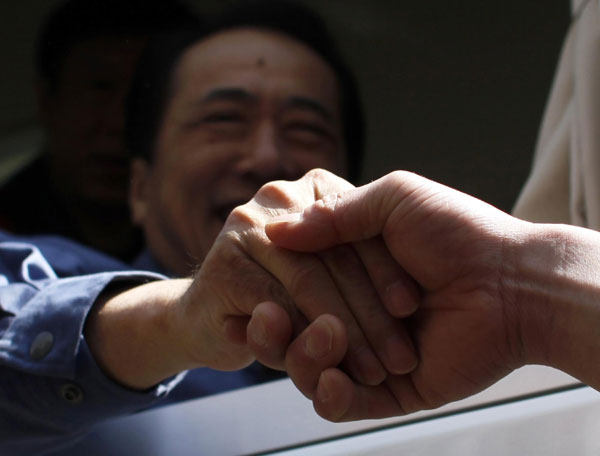Asia-Pacific
Japan's PM visits fishing city wrecked by tsunami
(Agencies)
Updated: 2011-04-10 18:55
 |
Large Medium Small |
"We must make sure we can do this safely," said Hidehiko Nishiyama, chief spokesman for Japan's nuclear safety agency.
Now that removal of the contaminated water is under way, officials are starting to consider options for restoring cooling systems vital to preventing further reactor damage. But they won't know what will work best until the water is out of the way and they can see which parts are usable and which have been destroyed.
Also Sunday, plant workers were getting ready to move highly contaminated water swelling in a trench in one of six reactor buildings into a storage area in the building. The transfer was necessary to keep the water from leaking into the sea.
In Tokyo's Koenji section, where many students live, thousands of people carrying "No nukes" signs gathered for a rally in a park Sunday, then marched through the streets chanting and beating drums. Elsewhere in Tokyo, about 140 miles (220 kilometers) southwest of Fukushima Dai-ichi, protesters demanding the closure of a different plant chanted "No more Fukushima" as they marched through government headquarters and past the Nuclear and Industrial Safety Agency.
Meanwhile, 250,000 households in northern Japan were still without running water and electricity Sunday. Some have not had it since the tsunami, while others lost it in a magnitude-7.1 aftershock Thursday that killed three people and rattled nerves, but did not cause extensive damage.
| 分享按钮 |
